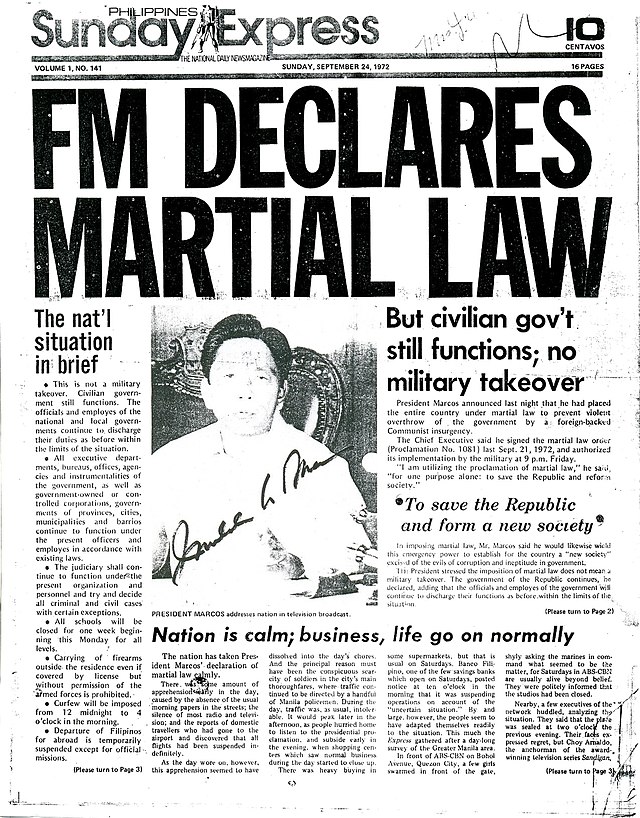News Articles Things To Know Before You Get This
News Articles Things To Know Before You Get This
Blog Article
A Biased View of News Articles
Table of ContentsFascination About News ArticlesThe Facts About News Articles UncoveredSome Known Details About News Articles The smart Trick of News Articles That Nobody is DiscussingThe News Articles PDFs
Great expertise of different topics offers trainees an one-upmanship over their peers. Despite the fact that electronic and social media sites are conveniently easily accessible, we must not neglect how vital it is to review the newspapers. Moms and dads should try and instill the practice of checking out a paper as an everyday regimen to continue the heritage of the adored print tool.Information tales also include at least one of the complying with essential characteristics relative to the designated target market: closeness, prestige, timeliness, human passion, oddity, or effect.
Within these limits, information stories likewise intend to be thorough. Among the bigger and more reputable papers, justness and balance is a major variable in providing info.
Newspapers with an international audience, as an example, have a tendency to utilize a much more official style of creating. The certain selections made by an information outlet's editor or content board are usually gathered in a design guide; typical style overviews include the and the US News Design Publication. The major objectives of information writing can be summed up by the ABCs of journalism: precision, brevity, and quality.
About News Articles
As a rule, reporters will certainly not utilize a lengthy word when a brief one will certainly do. They utilize subject-verb-object construction and brilliant, active prose (see Grammar). They supply narratives, examples and allegories, and they rarely rely on generalizations or abstract concepts. News writers try to avoid utilizing the very same word greater than once in a paragraph (in some cases called an "echo" or "word mirror").
Headlines in some cases omit the topic (e.g., "Leaps From Boat, Catches in Wheel") or verb (e.g., "Feline woman lucky"). A subhead (additionally subhed, sub-headline, subheading, subtitle, deck or dek) can be either a subservient title under the main heading, or the heading of a subsection of the short article. It is a heading that comes before the major text, or a group of paragraphs of the main text.

Additional signboards of any of these types may appear later in the article (specifically on succeeding pages) to lure further analysis. Such billboards are additionally used as pointers to the post in other sections of the publication or site, or as advertisements for the item in other publication or sites. Typical structure with title, lead paragraph (recap in bold), other paragraphs (details) and call information.

Example of a hard-lead paragraph NASA is suggesting one more space job. The budget demands approximately $10 billion for the project.
The NASA news came as the company asked for $10 billion of appropriations for the task. An "off-lead" is the 2nd essential front page news of the day. The off-lead appears either in the top left edge, or straight below the lead on the right. To "bury the lead" is to start the post with background details or details of secondary importance to the viewers, compeling them to check out even more deeply into a short article than they must have to in order to find the important points.
The Only Guide to News Articles
Usual usage is that a person or 2 sentences each develop their very own paragraph. Journalists normally explain the organization or framework of an information story as an upside down pyramid. The necessary and most interesting aspects of a tale are placed at the start, with sustaining details adhering to in order of lessening importance.
It allows individuals to discover a subject to just the depth that their curiosity takes them, and without the imposition of details or subtleties that they can consider unimportant, yet still making that info offered to a lot more interested readers. The upside down pyramid framework also enables short articles to be cut to any approximate size throughout layout, to suit the space available.
Some authors start their tales with the "1-2-3 lead", yet there are lots of type of lead readily available. This style usually starts with a "5 Ws" opening up paragraph (as explained above), followed by an indirect quote that serves to sustain a major element of the initial paragraph, and afterwards a direct quote to sustain the indirect quote. [] A kicker can look these up refer to several things: The last tale current program; a "delighted" story to end the program.
Longer articles, such as publication cover short articles and the pieces that lead the within areas of a paper, are referred to as. Feature stories differ from straight information in several methods. Foremost is the lack of a straight-news lead, a lot of the moment. Rather than providing the essence of a story in advance, attribute writers might try to entice readers in.
News Articles - Truths
An attribute's first paragraphs typically relate an intriguing minute or event, as in an "anecdotal lead". From the particulars of an individual or episode, its view promptly widens to generalities concerning the story's topic.

The Editor's Toolbox: A Recommendation Guide for Beginners and Professionals (2001) Allan M. Siegal and William G. Connolly. The New important source York Times Handbook of Style and Usage: The Official Design Overview Made Use Of by the Writers and Editors of the Globe's A lot of Reliable Paper (2002) M. L. Stein, Susan Paterno, and R.
Report this page